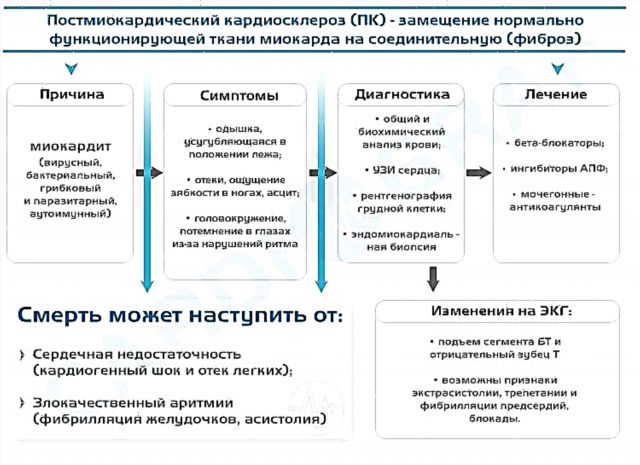 The causes of adenoids in children are quite diverse, and it is rather difficult to isolate any specific one in each case.
The causes of adenoids in children are quite diverse, and it is rather difficult to isolate any specific one in each case.
The pharyngeal, together with other tonsils (palatine, lingual, and tubal) form a lymphoid ring. It plays a huge role in protecting the body from the penetration of microbes.
Under normal conditions, the amygdala is small, however, under the influence of unfavorable reasons, tissue hyperplasia occurs.
Where do adenoids come from?
- lymphatic-hypoplastic diathesis, which is characterized by the growth of the amygdala and systemic lymphadenopathy;
- endocrine dysfunction (hypothyroidism);
- intrauterine infections;
- periods of the formation of immune reactivity;
- taking medications during pregnancy;
- toxic substances, radiation;
- chronic foci of infection (sinusitis, tonsillitis, pharyngitis);
- acute infections (ARVI, scarlet fever, rubella);
- specific infections (tuberculosis, syphilis);
- hypovitaminosis;
- allergic reactions;
- improper nutrition;
- unfavorable ecological situation.
In children, adenoids often develop in parallel with frequent tonsillitis. Due to the increased infectious load, the amygdala cannot cope with the opposition and begins to grow.
Over time, it is the hyperplastic lymphoid tissue that becomes a chronic focus of infection, keeping microbes in the lacunae and folds.
Diathesis in children
Lymphatic-hypoplastic diathesis is very common in children, but not all parents know that a child has such features of the lymphatic system. Adenoids in children with diathesis are quite common. The development of diathesis occurs due to hyperplasia of lymphoid tissues and disruption of the endocrine glands.
In severe cases, the pathology is manifested by thymomegaly, which means an increase in the size of the thymus. This is recorded in 80% of cases of diathesis. Normally, the thymus gland enlarges until puberty and gradually begins to atrophy. With diathesis, its reverse development is extremely slow.
On the one hand, it would seem that more cells of the lymphatic system - more powerful protection. But this opinion is wrong. A large number of cells that make up the tissue of the hyperplastic tonsil or thymus are immature structures. Because of this, they are not able to perform a protective function.
The exact causes of the diathesis have not yet been determined. Quite often, it is recorded in weakened and premature babies. An important role is played by chronic endocrine dysfunction and pathology of labor in the mother (premature effusion of water, fetal hypoxia, birth weakness).
There are no specific symptoms that allow one to suspect a pathology. There are only many physiological and pathological features that indirectly indicate disorders in the lymphatic system. Children have:
- overweight, while the fullness of the child is noticeable from birth;
- delicate skin, pallor;
- increased sweating, moisture in the palms, feet;
- lethargy, inactivity;
- irritability;
- nasal congestion, difficulty swallowing;
- inattention, decreased school performance;
- frequent allergies, obstructive bronchitis.
With the help of an ultrasound examination, the doctor reveals an increase in all organs that have lymphoid tissue. Usually, diathesis is suspected after adenoids are identified, so parents first encounter signs of adenoiditis.
If, in the absence of an acute infection in the body, the amygdala is enlarged, imagine what it becomes with a cold or flu. First of all, hearing and nasal breathing suffer, because the growths become edematous, blocking the lumen of the auditory tube and nasal passages.
Hypovitaminosis
Another reason for adenoids is a lack of vitamins. Vitamin deficiency conditions develop due to inappropriate nutrition, improper cooking, malabsorption and increased consumption of vitamins. Sweets and pastries loved by children, except for pleasure, do not bring any benefit. The same cannot be said about fruits, vegetables, fish and dairy products.
Under stress (exams, competitions), the need for vitamins increases by more than half. The same goes for the cold season.
 What should be done to avoid hypovitaminosis, thereby reducing the risk of adenoids?
What should be done to avoid hypovitaminosis, thereby reducing the risk of adenoids?
- eat enough protein, fresh vegetables and fruits;
- limit the use of fats, muffins;
- control physical activity;
- timely treat diseases of the digestive tract and endocrine glands;
- spend enough time outdoors and in the sun in the morning and evening.
Critical periods of childhood
Lymphoid formations can increase during periods of decreased immunity, when the child's body becomes vulnerable:
- the first two periods pass in the first year of life. The organism first encounters microbes. Protection in this case is provided by maternal antibodies. With frequent attacks of pathogens, primary defects in immunity appear;
- the third period takes the second year of life, when maternal protection is no longer present, and immature immunity is trying to cope with the infection on its own. The period is characterized by viral and bacterial diseases;
- the fourth critical period falls on 4-6 years. It is characterized by frequent atopic and autoimmune diseases. It is this time that is considered the most dangerous for hyperplasia of lymphoid formations.
We emphasize that, although the immunity of children is imperfect, it is still capable of resisting many microbes. Failure in its work occurs due to the negative impact of provoking factors (poor nutrition, living conditions, heavy physical activity).
Chronic infections
An increased volume of lymphoid tissue is observed with prolonged infectious pathologies. To fight microbes, lymphoid structures such as the tonsils undergo some changes. They are associated with hypertrophic processes in the tonsils, due to which their function is impaired.
This reaction of the lymphatic system is observed in chronic tonsillitis, pharyngitis, sinusitis and caries. Pathogenic microorganisms hide in lacunae and folds of mucous membranes, supporting the inflammatory process.
Symptomatically, it is not always possible to suspect adenoids, since during a normal examination the pharyngeal tonsil is not visible, and clinical signs overlap with manifestations of pharyngitis or sinusitis.
The tendency to adenoids is greatest in children who have the following symptoms:
- sore throat when swallowing or talking;
- perspiration in the oropharynx;
- dry type cough;
- subfebrile hyperthermia;
- general symptoms of intoxication (malaise, drowsiness).
It is also worth highlighting a group of children with frequent ARVI, tonsillitis, especially chronic course. Pathological changes occur not only in the mucous membrane of the oropharynx, but also in the palatine and pharyngeal tonsils.
If a child has nasal congestion against the background of pharyngitis, which does not go away for a long time, it is worth consulting with a doctor for the presence of adenoids.
In this case, treatment is carried out comprehensive, aimed at reducing the size of the adenoids and sanitizing chronic foci of infection in the nasopharynx and pharynx. Given the age of the patient, the severity of the chronic disease and the degree of tonsil hypertrophy, the doctor may prescribe:
- antibacterial agents (according to the results of an antibioticogram);
- rinsing the throat with solutions with antimicrobial, anti-inflammatory effect, as well as washing lacunae in a medical institution. This allows you to eliminate the infection and reduce the severity of intoxication. The procedures are carried out with furacilin, miramistin, chlorhexidine or soda-saline solution;
- washing of the nasal cavities. For this purpose, sea water (aqua maris, no-salt) or herbal decoctions (chamomile) are used; antihistamines (claritin, loratadine) to reduce tissue swelling;
- lymphotropic homeopathic remedies (lymphomyosot); vitamin and mineral complexes.
Allergic predisposition
Children with frequent allergies often suffer from adenoids. Allergens are several factors at once, for example, wool, citrus fruits, some drugs, pollen and hygiene products. Allergies manifest as local symptoms in the form of rashes, itching, lacrimation, rhinorrhea, redness and swelling of the skin, as well as general symptoms. The child may have a slight fever, sneezing, coughing and malaise.
The tendency to allergies also manifests itself in the form of lymphadenopathy, which is why adenoids are often detected in allergy sufferers. To alleviate the condition, contact of the child with the allergen is necessarily excluded, after which various drugs are prescribed:
- sorbents (enterosgel, atoxil);
- antihistamines (erius, suprastin), which reduce the hypersensitization of the body;
- hormonal drugs (in severe cases);
- lymphotropic agents (lymphomyosot).
To accelerate the elimination and prevent further absorption of allergic products, enemas can be performed and an abundant drink can be prescribed.
Causes of adenoids
 Why did the child have enlarged adenoids? This question is of interest to many parents when the doctor diagnoses "adenoids".
Why did the child have enlarged adenoids? This question is of interest to many parents when the doctor diagnoses "adenoids".
Some are perplexed about what could be the reason, because the nutrition is normal and the child does not often get sick, and the adenoids have appeared from somewhere. There are many factors that lead to the proliferation of lymphoid tissue.
We have analyzed the most common reasons. Now we list what else can provoke pathology:
- genetic inheritance. Where can we go without it? The predisposition to certain diseases can be transmitted from generation to generation and practically nothing can break the chain. The only way out is to comply with preventive measures literally from the birth of a child, which will reduce the risk of developing the disease or facilitate its course. It is quite difficult to avoid the appearance of adenoids if they are present in both parents;
- congenital or acquired pathological conditions associated with immunodeficiency. This applies to the period of intrauterine development, when the transferred infectious diseases in a pregnant woman, bad habits and the use of certain drugs can disrupt the laying and formation of organs, including immunity;
- diseases of the circulatory system, when immature forms of cells are detected in the blood that are unable to perform their functions;
- decreased immunity after suffering infectious diseases, for example, chickenpox or measles;
- frequent hypothermia, SARS or tonsillitis;
- diseases of the respiratory system of a systemic autoimmune nature, for example, cystic fibrosis;
- anomalies in the development of the facial skeleton, nasal septum and passages;
- overfeeding the child leads to regular regurgitation of excess food. The acid has an irritating effect on the nasopharyngeal mucosa, causing changes in it and the tonsil;
- adverse environmental conditions. This applies to dustiness, dry air and industrial waste pollution. In addition, in conditions of high humidity, when the room is not ventilated, the risk of infectious diseases increases.
Separately, idiopathic tonsil hyperplasia is distinguished, when, in the absence of the influence of negative factors and concomitant diseases, lymphoid proliferation occurs.
Prevention of adenoids
So that the adenoids have nowhere to come from, it is necessary to follow simple recommendations:
- increased immune defenses. Strengthening of immunity occurs in the process of hardening the body. It is done by wiping with warm water and by taking regular walks in the fresh air;
- restriction of communication with people suffering from infectious pathology. You need to be especially careful during an epidemic, why expose yourself to infection once again;
- eating fresh vegetables, fruits, dairy products, fish, meat and cereals;
- sanatorium-resort recreation in mountainous, forest or sea areas;
- sports activities and breathing exercises;
- regular visits to the dentist;
- timely treatment of chronic infections.
The strong immunity of the child is not only his health, but the calmness and joy of the parents.



